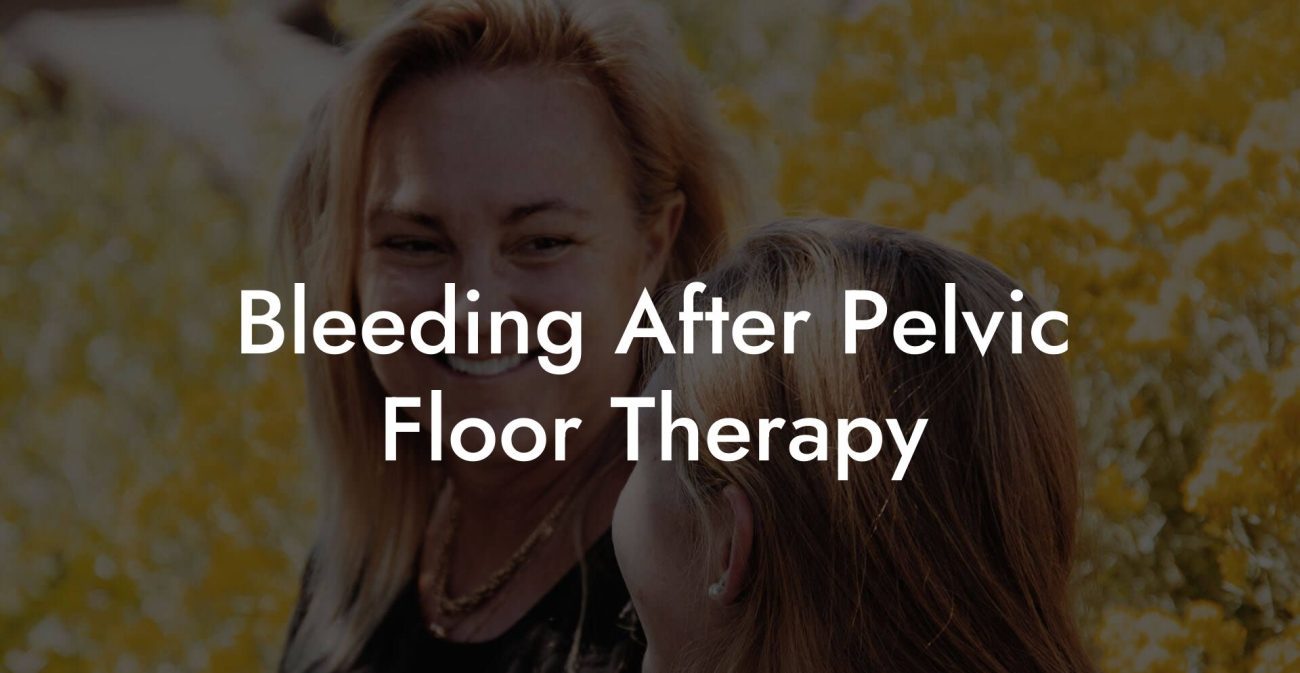Did you know that over 25% of women suffer from pelvic floor dysfunction at some point in their lives? This condition can lead to symptoms such as urinary incontinence, pain during intercourse, and constipation. In many cases, it's possible to manage and even eliminate symptoms with at-home treatments without necessarily seeking professional help. In this article, we'll discuss the causes of pelvic floor dysfunction and provide you with practical, at-home treatment approaches to help you regain control and confidence. Let's get started!
How Do You Treat Pelvic Floor Dysfunction At Home Table of Contents
Transform Your Pelvic Floor in Just 4 Weeks: The Pelvic Floor Bible
Transform Your Pelvic Floor in Just 4 Weeks: The Pelvic Floor Bible
Pelvic floor dysfunction is essentially the inability to control the pelvic floor muscles, which can lead to pain, discomfort, and a lack of control over bladder and bowel movements. Common causes include childbirth, obesity, menopause, aging, heavy lifting, and chronic coughing. While seeking professional help is highly recommended for a proper diagnosis, there are several at-home treatments you can try to alleviate the symptoms, improve your muscle strength, and regain control.
1. kegel exercises
kegel exercises are the cornerstone of any pelvic floor therapy. These simple exercises involve contracting and relaxing the pelvic floor muscles, which can help strengthen them and improve symptomatic control.
To perform kegel exercises, follow these steps:
- Sit or lie comfortably on your back.
- Identify the pelvic floor muscles by trying to stop urination mid-flow (don't do this regularly – only as a one-time test to identify the muscles).
- Once you're familiar with the sensations, contract the muscles for 5 seconds, then relax for 5 seconds.
- Repeat the exercise 10-15 times, at least three times a day.
Remember not to perform Kegels while urinating, as this can lead to unhealthy bladder habits and actually worsen symptoms.
2. Squats
Squats are an excellent full-body exercise that can also help strengthen the pelvic floor muscles. However, it's crucial to maintain the correct form to prevent injuries and ensure maximal benefit.
To perform a proper squat:
- Stand with your feet shoulder-width apart, with your toes pointing slightly outward.
- Lower yourself down by bending your knees and pushing your hips back, keeping the chest up and the back straight.
- Keep your knees in line with your toes.
- Squat until your thighs are parallel to the ground.
- Slowly rise back up, keeping the weight in your heels.
Perform two sets of 10 repetitions daily to strengthen your pelvic floor muscles.
3. Pelvic Floor Activations
Pelvic floor activations involve engaging the pelvic floor muscles while performing other exercises or movements. This can help you regain control over the muscles and integrate them into everyday activities.
To practice pelvic floor activations:
- Select an activity, such as walking or lifting an object.
- Before starting the activity, engage your pelvic floor muscles by performing a Kegel.
- Maintain the contraction while completing the movement or exercise.
- Release the contraction after finishing the movement.
Incorporate pelvic floor activations into various activities throughout your day for maximum benefit.
4. Mind-Body Techniques
Stress can sometimes exacerbate symptoms of pelvic floor dysfunction. Practicing relaxation techniques, such as deep breathing, meditation, or gentle yoga, can help reduce stress and ease muscle tension in the pelvic area, providing relief from symptoms.
5. Biofeedback
Biofeedback is a technique that helps you gain more awareness and control over your pelvic floor muscles using visual or auditory cues from sensors placed near the muscles. Although typically done with a healthcare provider's guidance, there are at-home biofeedback devices available to help you improve your pelvic floor muscle control.
In conclusion, pelvic floor dysfunction is a common and treatable condition. By practicing the at-home treatments outlined in this guide, you can improve your symptoms, build muscle strength, and regain control over your pelvic floor. Don't forget to explore other guides on Pelvic Floor Therapy for further support on your journey to better pelvic health. If you found this article helpful, please share it with friends and family who may benefit from these techniques as well. Here's to a healthier, happier you!













